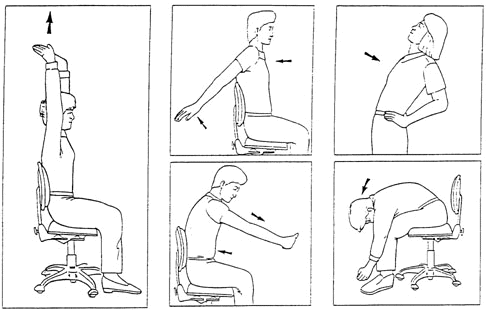Ergonomics
Back pain is one of the most common work-related injuries and is often caused by ordinary
work activities such as sitting in an office chair or heavy lifting. Applying ergonomic
principles (the study of the workplace as it relates to the worker) can help prevent
work-related back pain and injury, and help maintain a healthy back.
The goal of an ergonomics program in industry is to adapt the workplace to a specific worker, dependent on the job description, required tasks and physical make up of the employee performing those tasks. Two types of situations typically cause people to begin having back pain or to sustain a back injury while on the job.
- Non-accidental injury, where pain arises as a result of normal activities and requirements of the task. Poor body mechanics (such as slouching in an office chair), prolonged activity, repetitive motions, and fatigue are major contributors to these injuries. This may occur from sitting in an office chair or standing for too long in one position.
- Accidental injury results when an unexpected event triggers injury during the task. A load that slips or shifts as it is being lifted, slip and fall or hitting one’s head on a cabinet door are typical examples. These accidents can jolt the neck, back and other joints with resulting muscle strain or tearing of soft tissue in the back.
Office Chair Back Injuries
People who sit most of the day, such as those who work at a computer while sitting
in an office chair, are at risk for non-accidental back injury. Office ergonomics,
or computer ergonomics, can help minimize the risk of injuries such as:
- Carpal tunnel syndrome from repetitive keystrokes, or
- Neck strain, lower back pain and leg pain from prolonged sitting in an office chair.
Staying physically fit, strong and flexible improves the likelihood of avoiding back injuries in all types of work environments.
Tips for Reducing Back Pain

Contact Information
If you would like additional information regarding ergonomics, please contact Eddie Arias, Director of EHS (x5831) or email ehs@uhd.edu.
Helpful Resources
Office Ergonomic Checklist - Self assessment checklist that covers your office chair, keyboard, mouse, work surface, monitor, workstation accessories and work habits
Office Ergonomics - Video presentation on workstation adjustments that improve ergonomics.
Chair Adjustment Guide - Video presentation on chair adjustments that improve ergonomics
